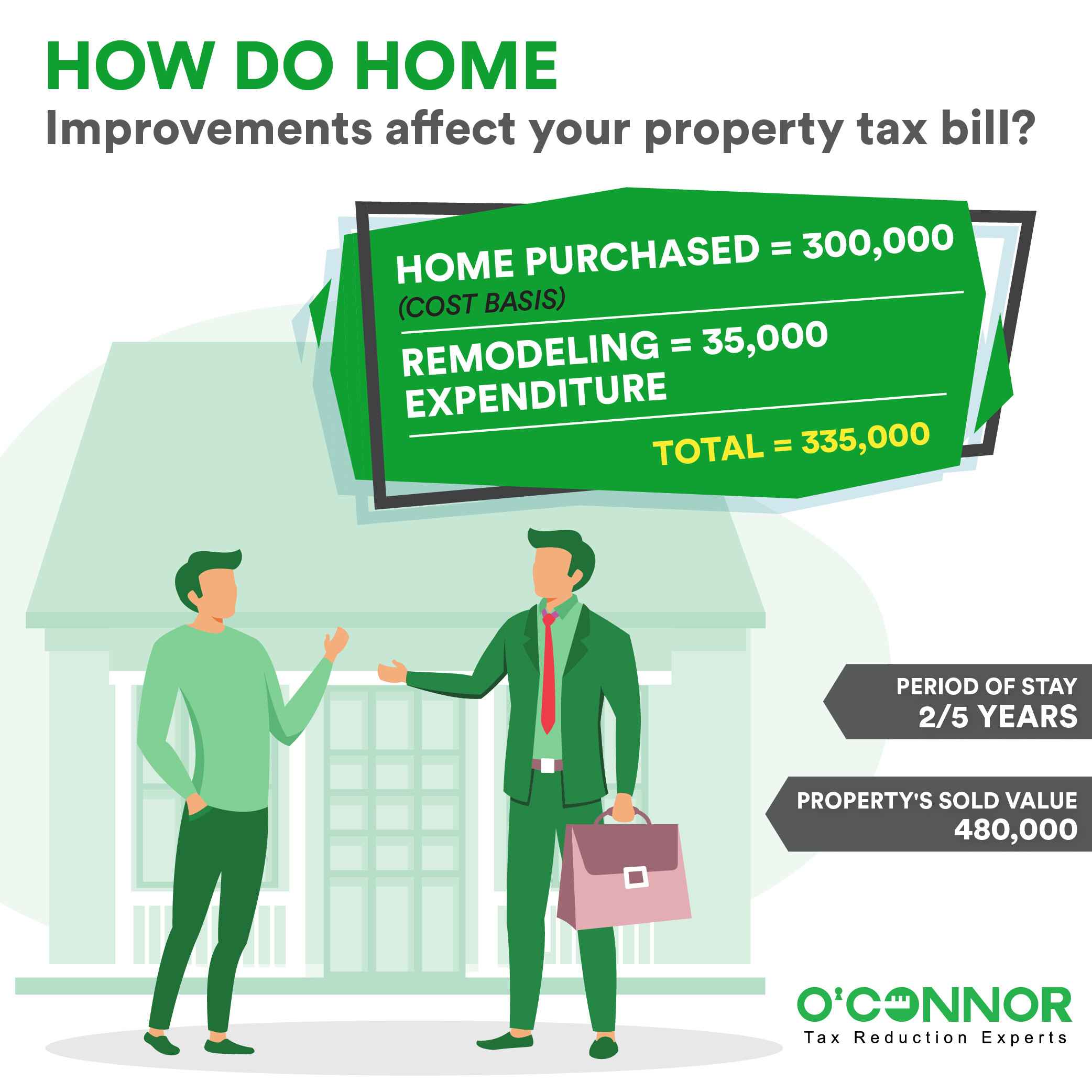Most homeowners have the question, “Do I get a tax break on the money I’ve spent?” on their minds when they are fixing up their homes. The answer differs based on the kind of improvements and how well the expenses incurred are tracked. In most cases, the money that is spent on the capital improvements such as adding an additional bathroom or a garage, or a satellite dish helps lower the property tax bill when selling a house. The money that is spent on home improvements can be categorized into two areas, the cost of improvements and the cost of repairs.
The cost of improvements not only includes big items but also includes energy-saving home improvements. These improvements give you tax credits. The cost of repairs is not added to the basic cost. As per the IRS from the year 2018 to 2021 individuals can claim credits for the below:
- 10% of the cost of qualified energy efficiency improvements and,
- the amount of the residential energy property expenditures paid or incurred by the taxpayer during the taxable year (subject to the overall credit limit of $500). Learn more here.
In the past, it was difficult for homeowners to keep a record of all the receipts that qualify as an improvement. As per the current law, if you own your home, and live in it for about 2 out of 5 years, and if the property is heading up for a sale, here is how the profits become taxable when selling your property: Profits that are more than $250,000 for an individual or profits that are more than $500,000 for a married couple who file taxes jointly are taxable. However, now the profits from the sale of a home are tax-free for most homeowners.
Taxable home improvements
Not all the improvements you do for your house are considered home improvement. The IRS looks at it differently. According to the IRS, the capital improvements made to a property must last for more than a year and must add value to your residential property and increase its life. Capital improvements can include constructing a new bathroom. Refer to the IRS Publication 523 to check out what items qualify.
However, there are limitations. The improvements made should be evident during the sale. Let us say you had made improvements to your home 7 years back by installing wall-to-wall carpeting. 5 years later you change it to a hardwood floor. At present, the wall-to-wall carpeting cannot be considered as a capital improvement. According to the IRS, repairs refer to those things that are done to maintain the good condition of a house and do not add value to the property or increase its life.
How do home improvements affect your property tax bill?
To know how home improvements affect your tax bill, it is important to know your cost basis. The cost basis is simply the amount of money you spend to build your house including costs such as your lawyer fee, survey charge, home inspection, etc. then add all the money spent for your property’s capital improvements. Let’s understand it better with an example:

Say if you are single, you get an exemption on the profit of 180,000. If you had not considered the money you spent on remodeling, then your tax bill would have included 35,000 as well. Hence, keeping the receipts and adjusting the cost basis help you save!
